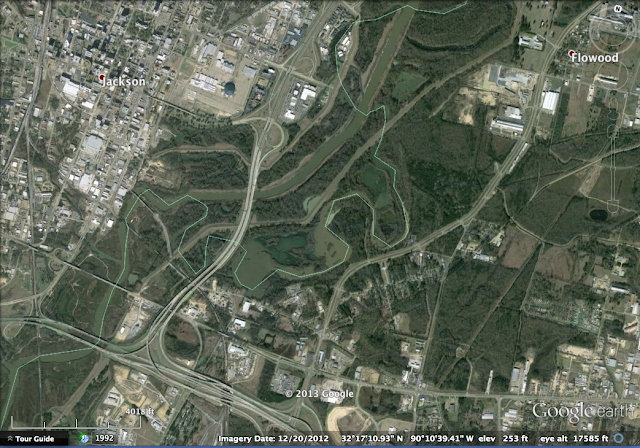I'm a pretty big fan of oxbow lakes (and the process of their formation!) Unfortunately, oxbow lakes probably don't have a lot of "fans" and probably don't even hold most folks' attention for more than a few minutes. However, I'd like to argue that they really should. Why?
1) They can happen in your lifetime! Unlike mountain building, continental rifting, volcanic island-chain formation, and ice age cycles, oxbow lakes can easily form and change the physical geography of a place in a relatively short amount of time. They share a category in this regard with things like glacial retreat and natural disasters (only the implications of a meander cutoff aren't as dooming, so there's another plus.)
2) They ignore the petty politics of geographical borders. Thinking about splitting from your neighbors? Why not use the nearby stream as the geographical border between your newly divided lands? That's easier than having to put up a fence, right? Think again! That stream might decide to move at some point! What happens when that fancy apple orchard growing inside the meander gets cut off and ends up on your neighbor's side of the stream? Who owns your precious apples now???
3) They're all about taking shortcuts. Who doesn't love a shortcut? Point A and Point B will briefly be a little closer together before the continuous erosion of cut banks extend the remaining meanders outwards.
4) They influenced my decision to keep this blog going. Last time I blogged about a meander cutoff it spread all over Google+ and Twitter and was shared by a number of other science and non-science bloggers. To this day, that blog entry is my most popular – being viewed almost 100x more than my next highest viewed entry. I'm extremely proud of this, and it was one of the reasons I kept this blog going. Oxbow lakes saved my life blog!
Here's a good example of county boundaries (shown as the thin green line and probably designated over a century ago) that were ignored by the Pearl River:
You can find it yourself on Google Earth using these coordinates: 32°11'20"N 90°12'00"W
Check back in two weeks to see a large scar in Wisconsin!











